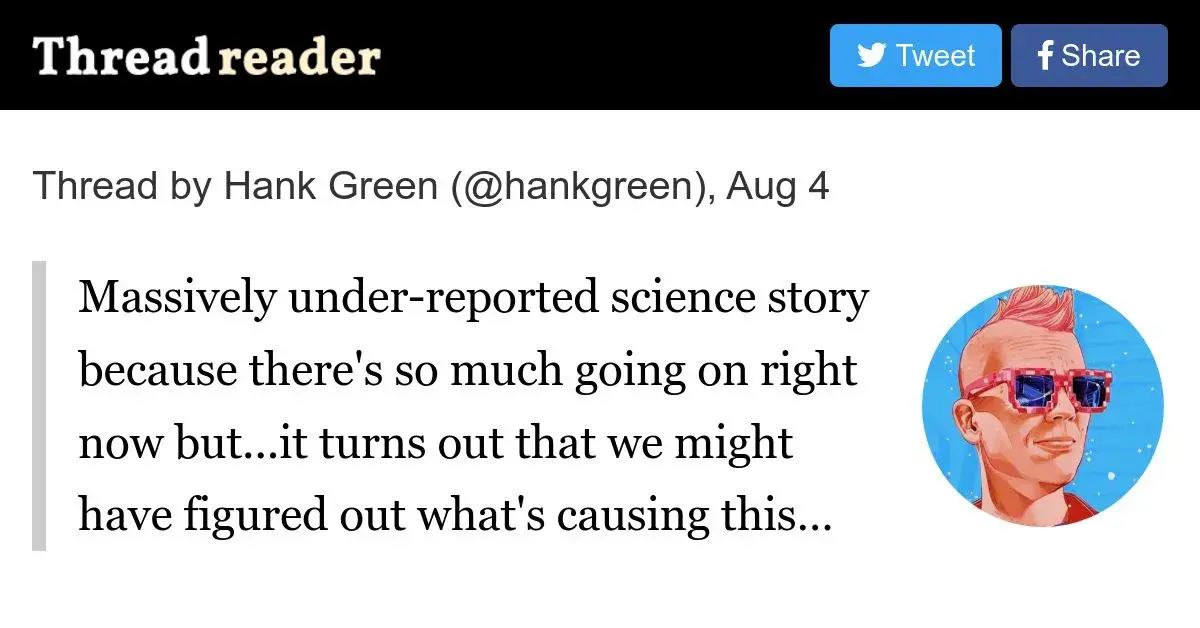Scientists have discovered that the recent spike in global temperatures may be caused by a reduction in sulfur dioxide pollution from shipping vessels. Ships have long emitted sulfur dioxide, which cools the planet by seeding clouds and reflecting sunlight. However, new regulations that limit sulfur in ship fuels took effect in 2020, leading to a loss of this cooling effect equivalent to a large volcanic eruption each year. Models show this reduction in sulfur dioxide pollution can explain the extra warming seen in the North Atlantic. While pollution is bad, the new regulations provide a natural experiment that gives insight into how intentional geoengineering could potentially combat climate change in the future.



At least to your second point, in the video he explains that there are ways to seed clouds for cooling purposes without any major side effects, and the experiment hes talking about is that this shows it can be done on a large scale. Whether it would make us complacent on getting CO2 out of the air, though, it might but at least it would be the start of a solution.
Right, but their point was kind of about side-effects we’re not aware of at the time. So that’s kind of the entire point, that we think there are no negative side effects only to later find out we were wrong.
So that doesn’t really address what they said at all.
Exactly this. We think we know everything when we start doing stuff. But after a while we found out we where wrong and fucked up.
We don’t fully understand/comprehend nature and how it all interacts. We shouldn’t be so ignorant to think we do understand it.
If only we were allowed to study this approach without so much immediate reflexive opposition.
Hank also says that we’re at point where we need to cut emissions AND carbon capture AND geoengineer in order to mitigate climate disaster. It can’t be a one and done solution anymore, we’re beyond that
And considering we are at risk for loosing tons of biodiversity in the oceans from this heating (see mass coral bleaching event in florida) I think we have to start seeding clouds and whatever mitigating factors we can
Sounds like something China can pioneer and that the West will adopt a decade or so later after China shows it really does have no major side effects.
A while back there was a round of interest in the possibility of countering global warming by using specialized high-altitude planes to spray calcium carbonate particulates into the upper atmosphere, and it was calculated that global warming could be countered with an ongoing expenditure of $2 billion per year. That’s peanuts for a country like China, so if climate change starts causing them significant identifiable losses I wouldn’t be at all surprised if they gave it a go.
It already is, looking at recent flooding.